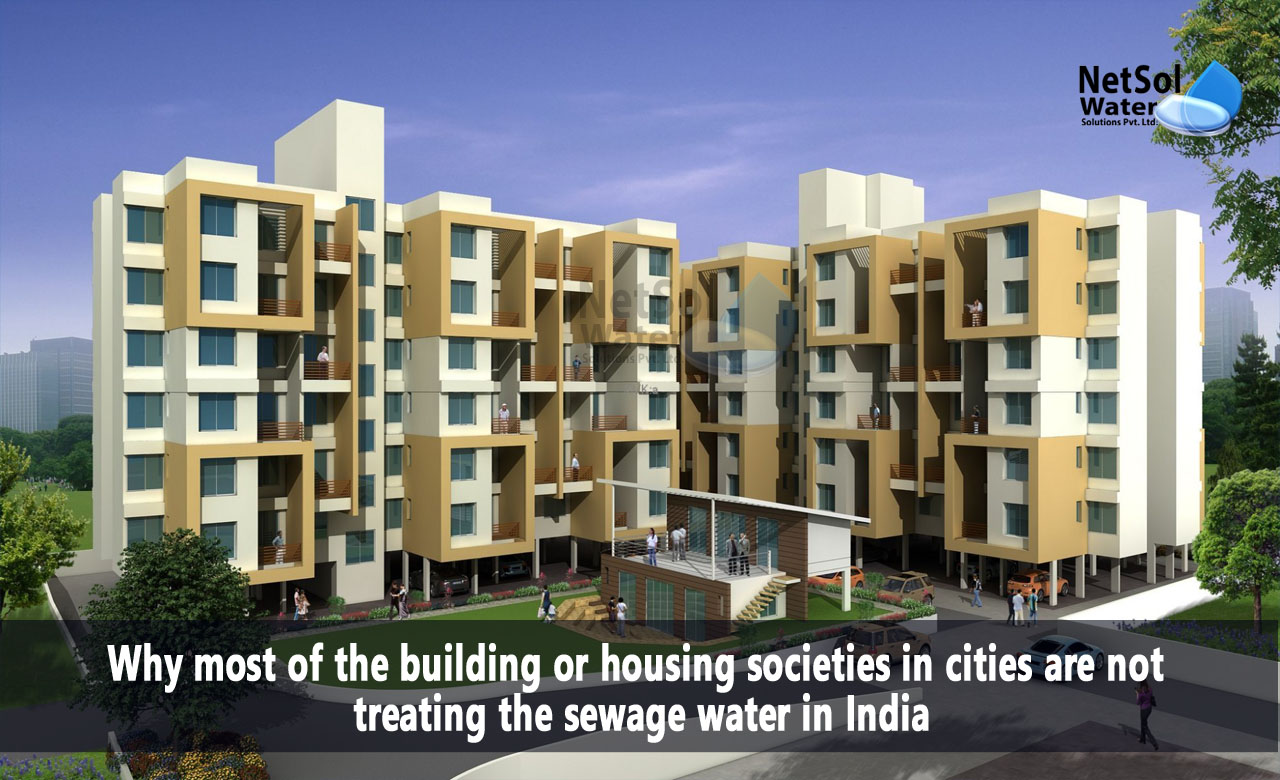Case Study: Why Building/housing societies don't treat sewage water
Sewage management has become an issue due to fast urbanisation and growing water consumption. But in many of these societies, there is no treatment of sewage water, which raises questions on why there’s no action. Here, let’s tackle this problem with the help of a case study and data.
Case Study: Delhi’s sewage treatment situation.
One of the problems facing the capital city of India, Delhi, is that of sewage treatment in residential complexes. For example, Chattarpur Enclave which is a well-developed posh area of South Delhi.
The Problem:
In Chattarpur Enclave, the sewerage system has not yet been implemented by housing societies that are well-off and close to urban amenities. They don’t have modern sewage treatment plants; instead, their waste is collected in old septic tanks or open drains.
Data Insights:
Treatment Facilities: According to a survey conducted with twenty housing societies in Chattarpur Enclave, only 30% had functioning sewage treatment plant (STPs) while 70% had no kind of sewage treatment arrangement.
Environmental Impact: Uncollected sewage from these bastis eventually reaches the nearby stormwater drains, polluting rivers, lakes and ponds putting people’s health at risk.
Reasons Behind Non-Treatment:
Cost Constraints: A significant reason for the absence of sewage treatment in many countries is the high initial cost of establishing and operating STPs.
Lack of Awareness: Some societies might not understand the environmental and health consequences of dumping untreated sewerage.
Space Constraints: Delhi and other heavily cramped cities face the issue of space to place sewage treatment plants.
Regulatory Gaps: In certain places, the relaxation in environmental law leads to a society not being obliged to install STPs.
The Consequences:
The absence of sewage treatment in housing societies has several detrimental effects:
Environmental Pollution: Sewage in its raw form is poisonous and contributes to water pollution which harms indigenous environments.
Public Health Risks: Contaminated water can result in waterborne diseases, posing a threat to residents’ health.
Depletion of Groundwater: The discharge of raw sewage into the environment can pollute groundwater and deplete an important supply of clean water.
Possible Solutions:
Government Initiatives: The government could encourage societies by providing subsidies or tax benefits for installing the STPs.
Public Awareness: It is necessary to educate citizens about the significance of sewage treatment and its positive outcomes in the long-term.
Regulatory Enforcement: It’s necessary to enforce sewage treatment rules to see them followed strictly.
Resource Sharing: In heavily populated regions, communities can research resource pooling schemes such as community STP’s.
Conclusion
The example of sewage treatment in the Chattarpur Enclave of Delhi is just illustrative of a larger problem concerning the large amounts of untreated sewage in numerous urban housing societies all over India. These are hurdles such as expense and space limits, but those must be overcome for the sake of the environment and public health. By coming together, government intervention, public awareness campaigns along strict legal action from authorities, we can make sewage treatment the norm for all buildings and group housing societies of India. Wastewater treatment is not only an obligation, but it is also an imperative for sustainable urban development in our cities.
Netsol Water is Greater Noida-based leading water & wastewater treatment plant manufacturer. We are industry's most demanding company based on client review and work quality. We are known as best commercial RO plant manufacturers, industrial RO plant manufacturer, sewage treatment plant manufacturer, Water Softener Plant Manufacturers and effluent treatment plant manufacturers. Apart from this 24x7 customer support is our USP. Call on +91-9650608473, or write us at enquiry@netsolwater.com for any support, inquiry or product-purchase related query.



